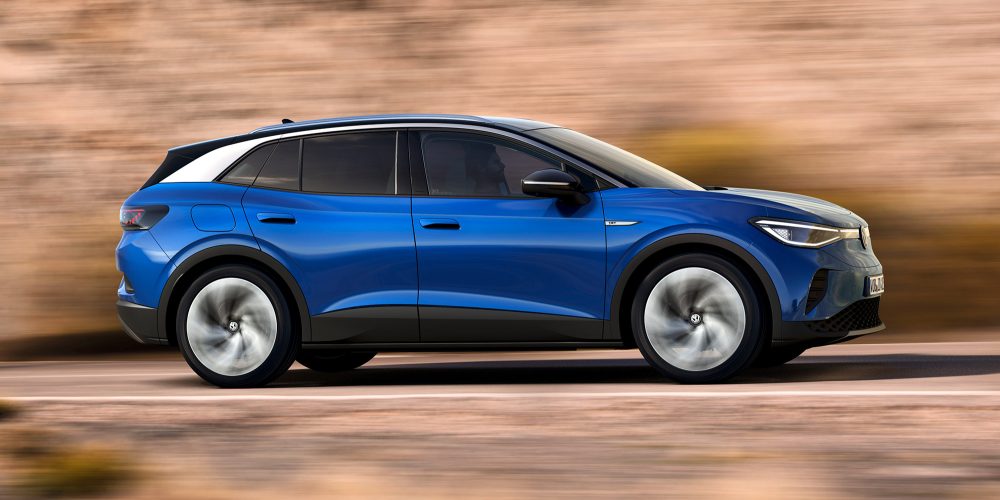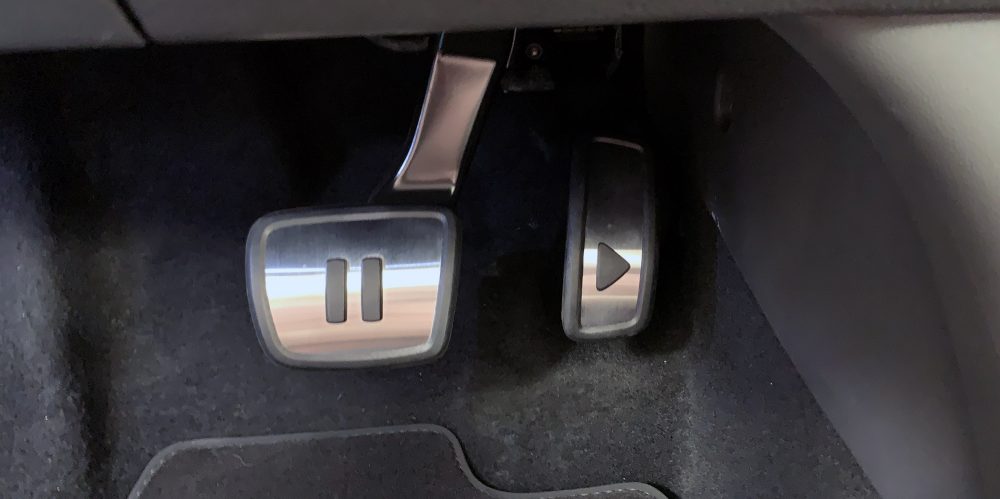
Last week, we got our first in-person look at the production version of the all-electric ID.4. During the socially distanced event, VW set high expectations for the crossover EV. “We believe this is our most important product launch since the Beetle,” said EV product manager, Jeffrey Lear.
To achieve that goal, Volkswagen set a Bug-like mainstream price. The sizable SUV — with dimension nearly matching the RAV4 or CR-V — will be close to $30k after incentives in many US markets. A follow-up variant with a small battery pack, due in 2022, will cut the price by another $5,000.
If that doesn’t convince you that Volkswagen means business, consider that all ID.4 models come with three years of free charging at Electrify America stations. That’s free fuel for three years, folks. Moreover, it addresses a segment of potential EV buyers mostly overlooked. “You can live in an apartment and park on the street and still drive this vehicle,” Lear said.
A few thousand “First Edition” models, at $43,995, will be delivered later this year. The $39,995 ID.4 Pro, which takes away a few design enhancements, will follow in early 2021.
Both vehicles, which will be manufactured in Zwickau, Germany, use an 82-kilowatt-hour battery back (77 kWh of usable energy).
The estimated range based on the EPA cycle is 250 miles. The single rear-mounted motor produces 201 horsepower and 228-pound feet of torque. A 300-hp, two-motor variant arrives in late spring 2021, but VW did not yet provide the price.

The breakthrough in EV affordability comes when ID.4 production comes to the US in 2022. That’s when the ID.4 will be offered with a smaller pack for about $35,000.
After incentives, that means a long-range, practical electric SUV for the mid-$20,000s.
Big, Stylish, and Affordable
For comparison, the Tesla Model Y’s most affordable version costs $49,900 and is not eligible for a $7,500 credit. The difference in net price could be $15,000 to $20,000 (without even considering free fuel). Yes, the Model Y goes 316 miles on a single charge, which is useful for the occasional road trip. But the ID.4 is an entirely different segment — the mainstream market that so far has eluded Tesla.
The ID.4’s attractive price wouldn’t mean much if Volkswagen created a less attractive or useful crossover. But in person, the body design has real presence. It’s somewhat like a power wagon in the spirit of the Jaguar I-Pace.

By maintaining a high rear roofline — rather than the tapered approach of the Mustang Mach-E or Model Y — Volkswagen grants more storage space. It feels bigger than the official metric of 30.3 cubic feet behind the second row of seats. Fold down those seats to get 64.2 cubic feet of space. VW decided against a frunk, instead of pushing the firewall forward to eke out more passenger space.
This is the first EV that Chevy or Nissan should have made. Chevrolet will get closer with the Bolt EUV. Nissan will provide a legit alternative with the Ariya, but not until mid-2021.
Volkswagen’s Lear explained the ID.4’s distinction from compact electric offerings:
There are a lot of EVs out there that are a little bit compromised—whether in their design or space. We deliver a much bigger vehicle that you actually want to drive because it looks stylish. We are delivering one package at a great price.
Based on our 30 minutes kicking the tires and sitting inside, that sounds about right.
The ID.4 is a legit five-seater. My 6’4” length comfortably fit in the back row — even with the driver’s seat run all the way back. Moreover, VW equipped the ID.4 with the right stuff. The lines are crisp. Cabin surfaces are mostly soft to the touch. There are a few hallow plastic pieces, but those are reserved for accents.
There’s no leather, but the First Edition has power seats with memory settings. The seats are heated and massage your lower back. There are 19-inch alloy wheels that can be upgraded to 20-inchers. And the driver-assist package is full-featured, albeit without big promises for semi-autonomy.
For Drivers, Not Techies
Volkswagen wasn’t trying to break ground on whiz-bang technology. The dashboard has practical analog buttons. Pure innovation is replaced by thoughtful consideration of use and value. “Volkswagen is a volume manufacturer,” explained Lear. Amen.
Door handles are flush but more functional and durable than competing designs. The onboard charger refuels at a competitive 11 kilowatts. However, the portable charging cord is strictly a Level 1 affair.
There are a few noteworthy playful elements. The First Edition’s aluminum alloy foot pedals have a “Play” symbol etched in the accelerator and the double vertical lines of a pause button on the brake pedal.

A pillar-to-pillar light bar below the windshield indicates turn-by-turn navigation or it indicates state-of-charge by how much of it is solid (after you plug in).

From all indications, the VW ID.4 occupies a new practical electric segment. I proposed a new label for it: value-oriented electric SUV. That pleased Lear. “It didn’t exist until the ID.4,” he said.

Online ordering with $100 deposits starts today. There are seven buildable combinations — including a $4,500 “Statement” package that adds a panoramic fixed roof with a sliding sunshade. And the $1,500 “Gradiant” package that brings 20-inch alloy wheels and sharp bi-color design treatment.
The First Edition starts delivering in late 2020 with a full rollout of other options in early 2021.
Subscribe to Electrek on YouTube for exclusive videos and subscribe to the podcast.
Author: Bradley Berman
Source: Electrek



